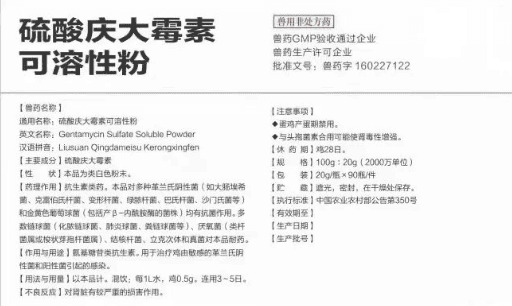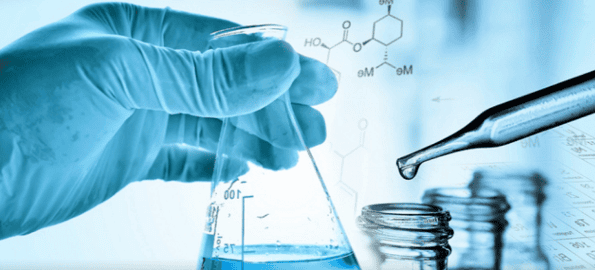Gentamicin sulfate is a broad-spectrum antibacterial drug of the aminoglycosides, and is the same antibiotic as neomycin sulfate, kanamycin sulfate and monokanamycin. However, gentamicin sulfate is clinically much more sensitive and safer than them. Gentamicin sulfate has bacteriostatic and bactericidal effects on a variety of Gram-negative and positive bacteria such as Escherichia coli, Salmonella, Mycoplasma, Pseudomonas aeruginosa, and Staphylococcus aureus in clinical poultry. This is one of the important pharmacological characteristics of the drug that is currently very effective when injected intramuscularly into poultry.

The reason why gentamicin sulfate is sensitive and more effective than neomycin The other main reason is its superior mechanism of action. Although they are all aminoglycoside drugs, gentamicin binds strongly to specific proteins on the subunits of bacterial ribosomes and interferes with the function of ribosomes more strongly, thereby strongly preventing bacterial protein synthesis and causing translation of messenger ribonucleic acid. (mRNA) code errors lead to the synthesis of non-functional proteins.
Absorption and Distribution
If you want to use gentamicin sulfate correctly and effectively, in addition to understanding the pharmacology and characteristics of gentamicin sulfate mentioned above, you must also be familiar with it. The absorption and distribution of gentamicin sulfate in the body after injection, so that it can be used for the diseases it is best at treating and the most appropriate method of administration, so that good medicine can be used on the cutting edge and give full play to the medicine's due Efficacy.
For example, after the absorption of gentamicin sulfate, the first saturating dose given by injection should theoretically be no less than 5 mg/kg.
If your first dose is 2.5mg/kg, it will cause the gentamicin blood trough concentration in the chicken to be exposed to the ineffective <1μg/ml for a long time, then this The treatment effect is relatively poor. And if you give a dose of no less than 5 mg/kg, the effective blood concentration in the chicken should be maintained in the effective range of 5 to 12 μg/ml.
The lowest blood drug trough concentration will remain at the effective level of 3 to 4 μg/ml. Gentamicin sulfate injection has a unique therapeutic effect on sepsis, lower respiratory tract infection, reproductive system infection, abdominal infection, skin and soft tissue infection caused by bacteria. Including some people who have tried intratendinous injection administration, the treatment of difficult arthritis has received unique therapeutic effects that other antibacterial drugs and administration routes have failed to achieve.

Treatment and standard formulation
gentamicin sulfate The main clinical applications of mycin in current poultry treatment are mostly used to treat difficult bacterial and mycoplasmal diseases. For example, gentamicin sulfate is combined with cefquinoxime injection or ceftiofur hydrochloride injection to treat bacterial and mycoplasmal sepsis and lower respiratory tract (airsacculitis and embolism) infections; gentamicin sulfate and Fuzheng Combined with detoxification, it can treat synovial mycoplasmosis in chickens (commonly known as synovitis); or it can be injected with gentamicin sulfate alone to treat septicemia caused by E. coli, Salmonella and other diseases.
These compatibility and treatment usages are all standard configurations of gentamicin sulfate in veterinary clinical treatment. Of course, in addition to those introduced above, gentamicin sulfate can also be compounded with oral penicillin preparations such as amoxicillin colistin sulfate soluble powder, compound amoxicillin powder, amoxicillin soluble powder, ampicillin soluble powder, etc. This combination of gentamicin sulfate and penicillin antibacterial drugs can achieve a synergistic antibacterial effect of "1+1>2".
However, it needs to be emphasized that gentamicin sulfate, like all other aminoglycosides, has varying degrees of potential nephrotoxic side effects on poultry. Although gentamicin sulfate is more Mycin and kanamycin are much smaller, but they are still available. During clinical use, when encountering those cases with poor kidneys, the minimum effective dose needs to be used, and sufficient drinking water should be provided after administration. If conditions permit, some health-care additives that promote drug metabolism can be appropriately given to farms, which can greatly reduce the occurrence and occurrence of side effects. Give full play to the therapeutic effect of drugs.

 扫一扫微信交流
扫一扫微信交流
发布评论